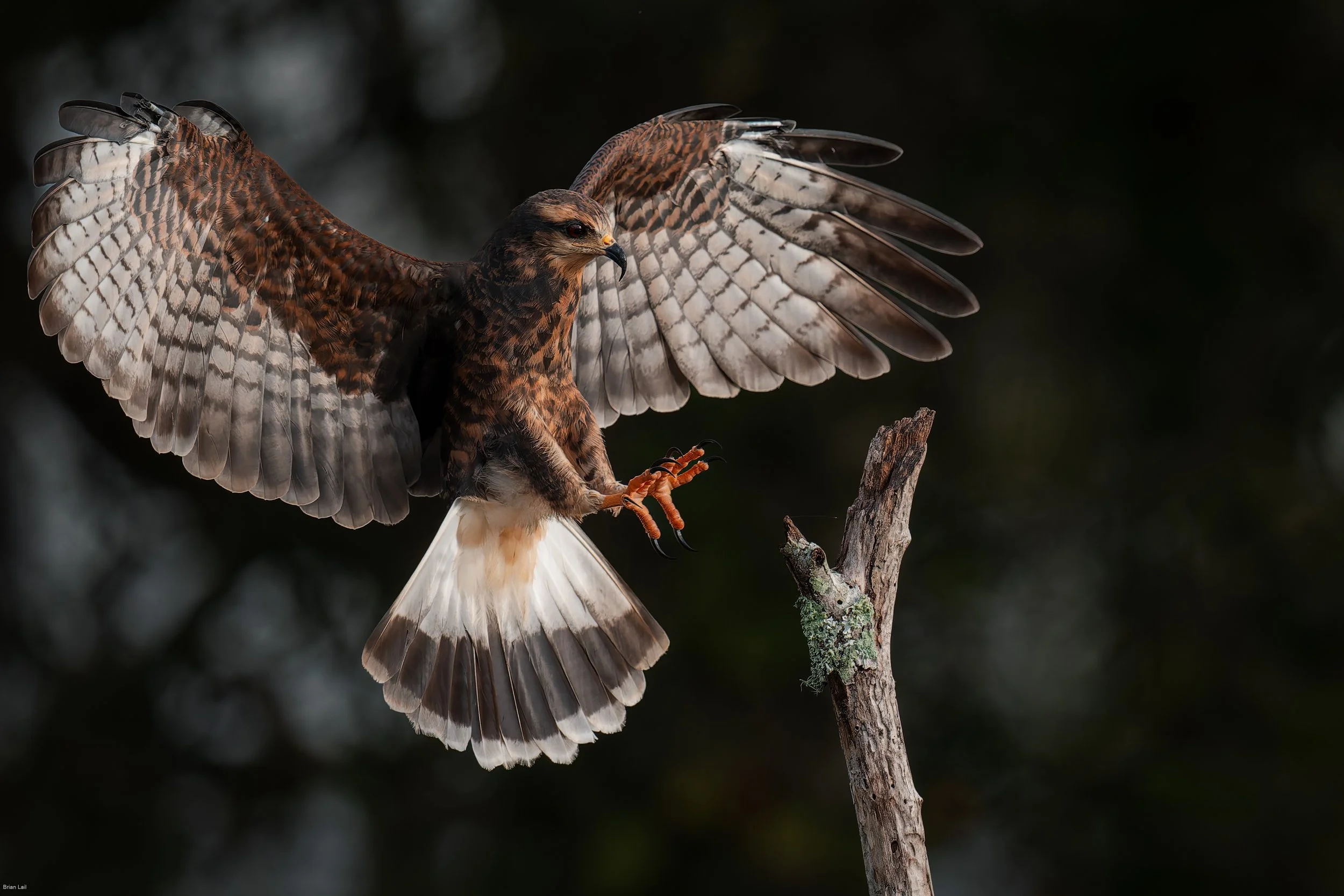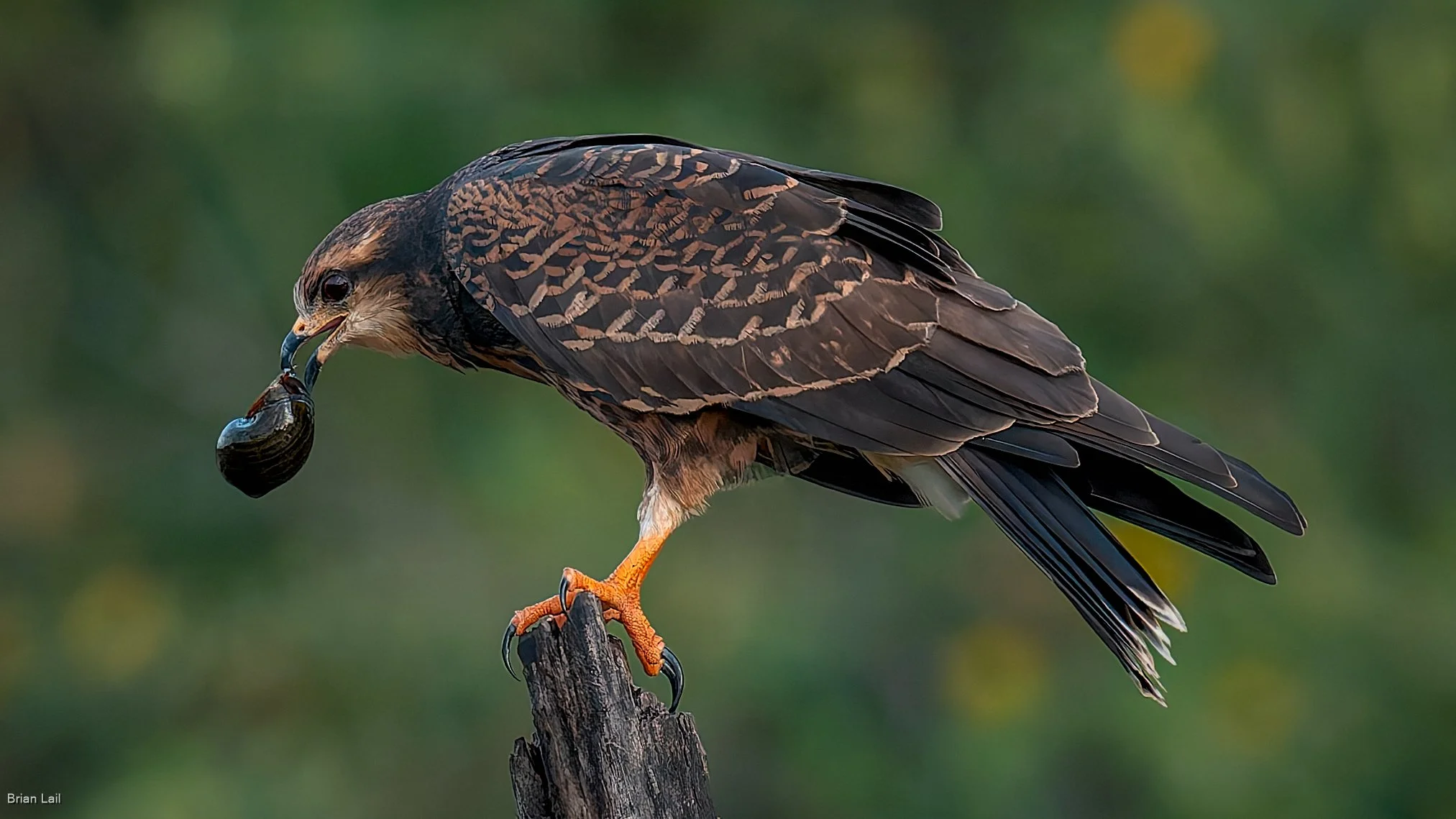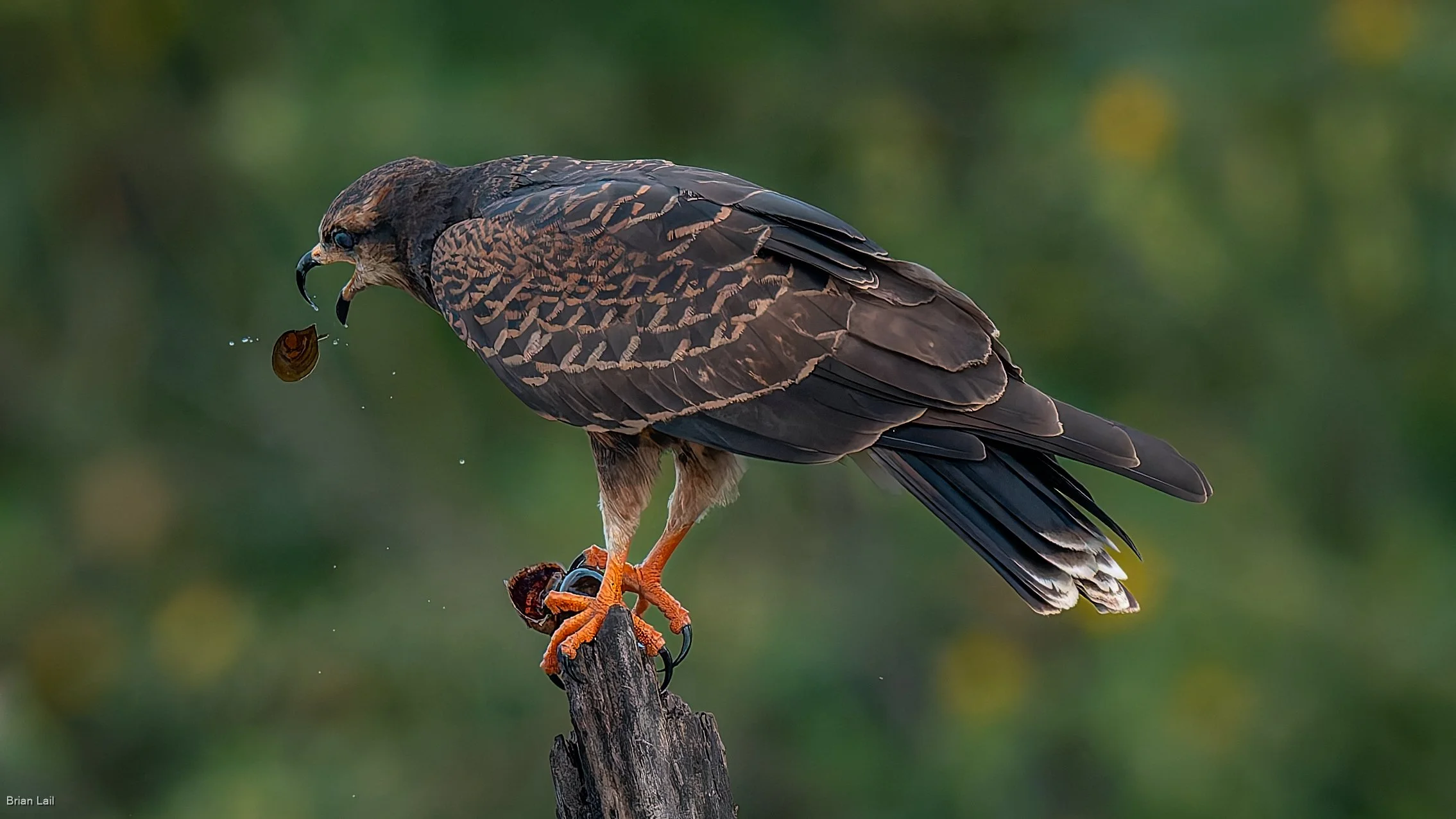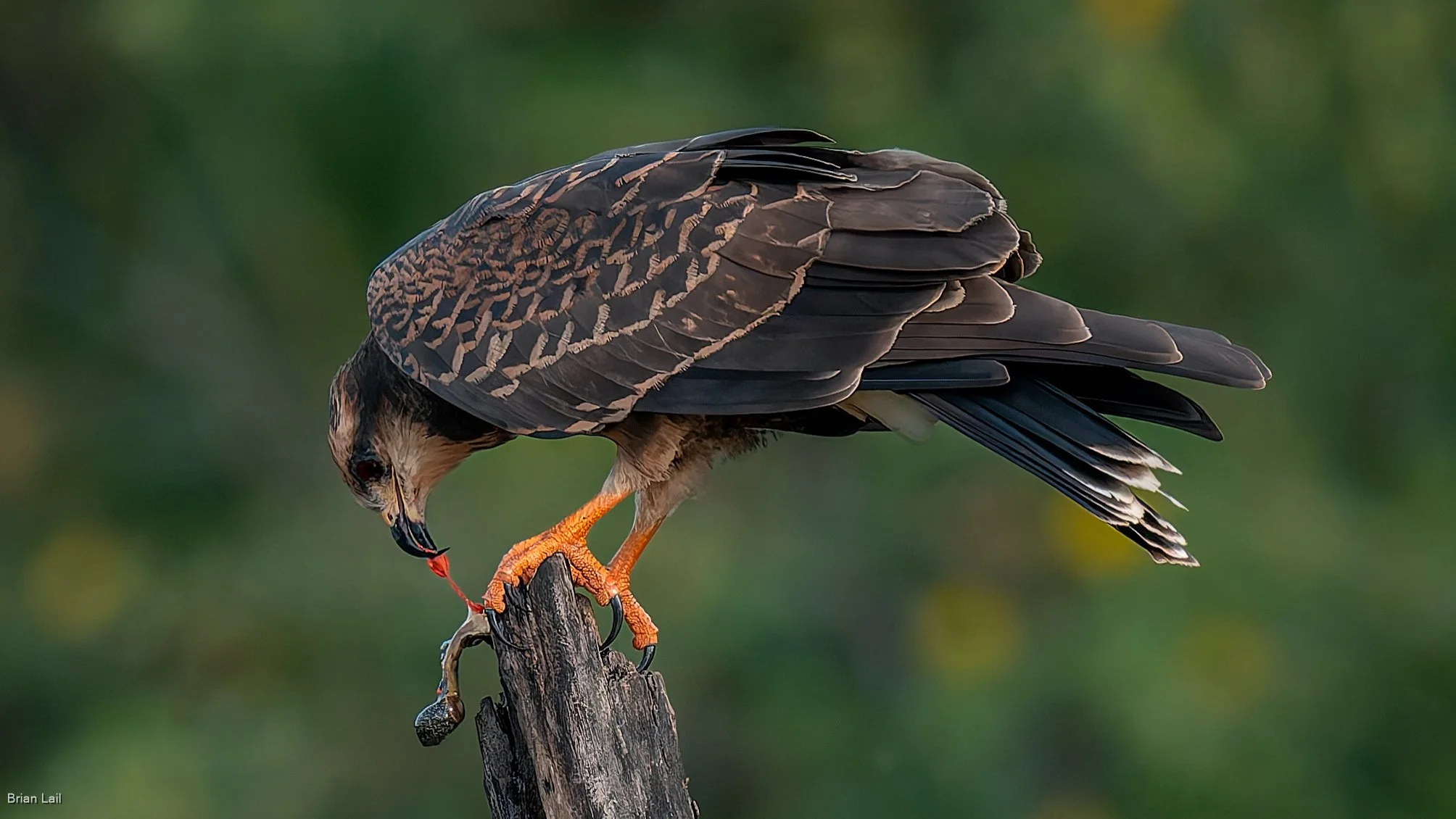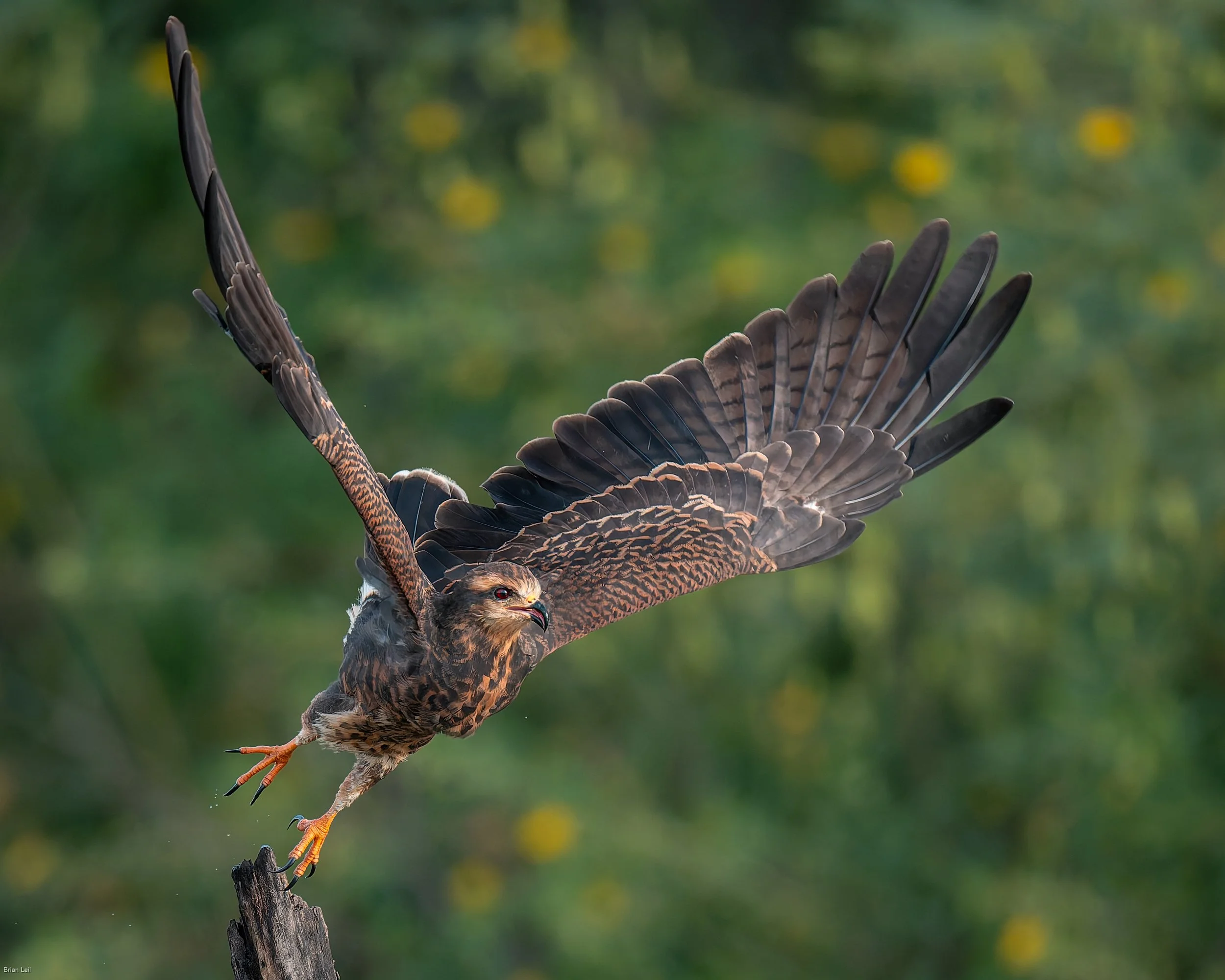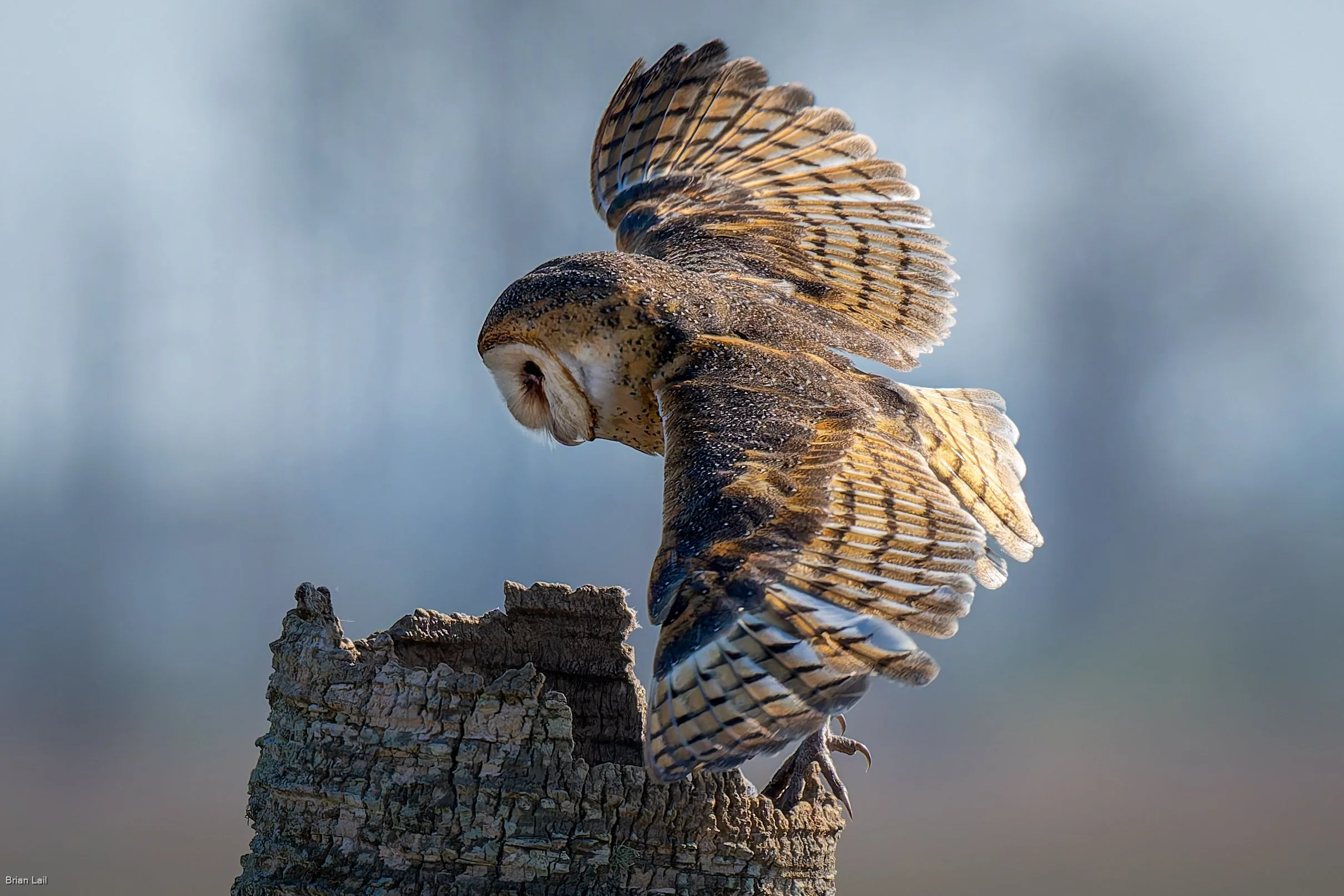A meal with a Snail Kite
Snail Kites are medium-sized birds of prey. Their favorite food is the apple snail, and their curved bills are ideally suited for extracting snails from their shells.
Snail kite settling onto a perch.
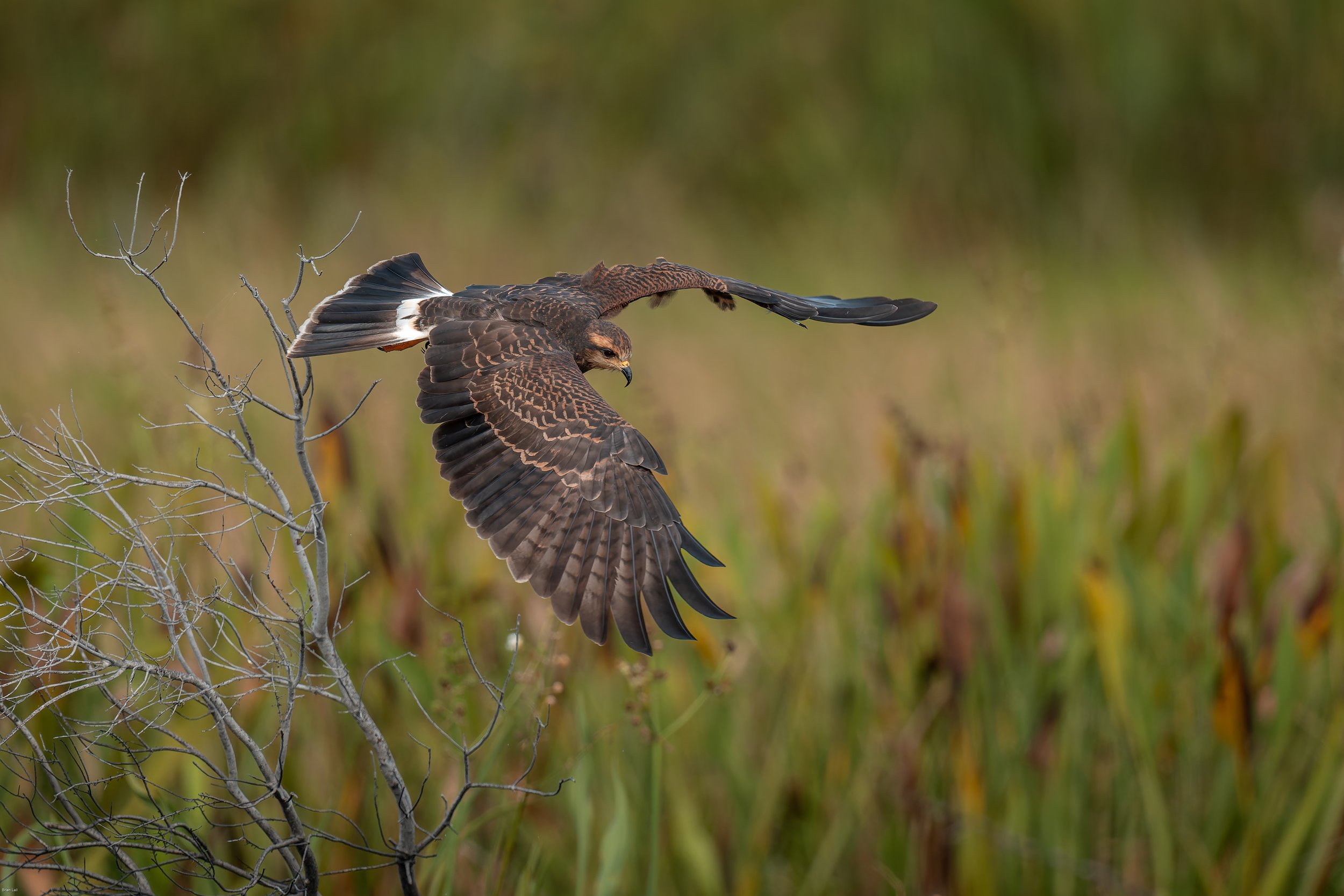
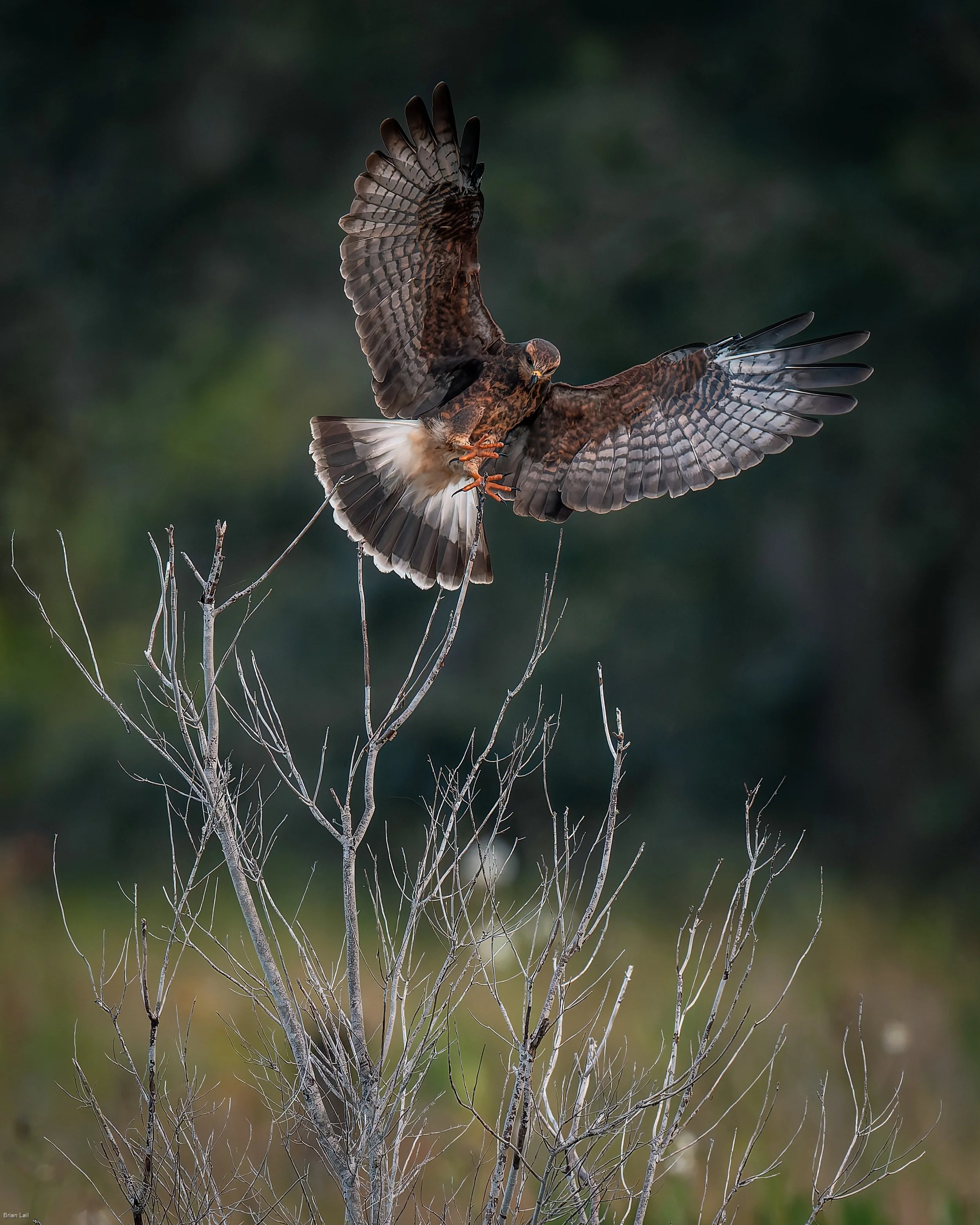

When it is time to eat the snail kite takes flight in search of apple snails. They drop onto the snail and secure them in their talons.


Once they settle onto a perch, the steps of eating an apple snail begin.
Step 1.
Move the snail to the bill.
Step 2.
Gain access to the snail. This requires removing the operculum, the “door” that seals off the shell.
Step 3.
Once removed, the operculum is discarded.
Step 4.
Now the work begins to extract the snail from the shell.
Step 5.
With the snail extracted, there is an opportunity for a quick check to be sure shell is empty.
Step 6.
The empty shell is discarded.
Step 7.
All that remains is to enjoy a tasty snail meal…
Step 8.
…and fly away with a full belly and a smile.
The Red-winged Blackbird and the Hawk
Small birds will often harass or attack a predator that comes near their nest. This activity is often a concerted effort of multiple small birds with is referred to as mobbing. Red-winged Blackbirds will chase a predator, sometimes they grab tail feathers or land on the predators back, as they defend their nesting location. And they do not require a mob to attack; they take on much larger predators alone when threatened. The Red-winged Blackbird below swooped in behind the hawk, approaching from behind until impacting the predator, and then flew away as the screaming hawk moved beyond the blackbird’s nesting area.
The Barn Owl, the nest, and nature…
Barn Owls breed in Florida and they often nest in hollow tree cavities. This is a story of such a nest. It was a weekend morning excursion, camera in hand and on the lookout for wildlife, when the Barn Owl was noticed. She was standing looking down into the hollowed opening of a palm stump.
It soon became apparent that the Barn Owl was in distress. Her focus was locked on the interior of the hollow stump as her characteristic screeching calls became more and more prominent.



In a moment of despair, she flew away from the tree stump, circling back before perching in a nearby tree.
There were a few moments of calm and silence. Then there was movement at the tree stump and immediately the story became clear. A raccoon had discovered and entered the nest. With the owl away for a few moments, the raccoon made a quick escape.
Black Bears in the Woods
In late spring black bears in the Great Smoky Mountains National Park are often seen with their cubs. While enjoying the beautiful Cades Cove loop a big momma bear and her four cubs were seen. Momma bear was busy foraging while the cubs ran around playing. It was at this point that I started to think that bear cubs have the most fun. And what fun to watch their playful antics, climbing trees, and wresting each other.
Momma bear foraging while her four cubs play nearby.
A playful black bear cub chewing a tree stump.
Momma bears need food, and she continued foraging while the cubs scurried around causing mischief and having fun as bear cubs do. At some point, the cubs took turns climbing a tree, quickly ascending and then gently lowering themselves back to the ground.
Eventually, momma bear was ready to move along and, with a look back, she encouraged the cubs and off they went further into the woods.
Momma bear checking on her cubs
Two of the four cubs running after their momma and off into the woods.
Black Skimmers Skimming
The white and black plumage of a Black Skimmer is easy to spot, but a closer look reveals the truly defining characteristic; the Black Skimmer has a large red/orange and black bill with a longer lower mandible. This enables a unique feeding technique based on touch where the skimmer glides along just above the water with the lower mandible partially submerged, skimming the water’s surface. They typically skim in the early morning or late evening when the water is smooth and fish are more likely to be near the surface.
As social birds, Black Skimmers often spend the day grouped together resting, preening, and interacting with occasional excursions into the air.












When the air is calm, the water is glassy, and the skimmers are skimming, it is a wonderful sight to see. They circle around repeating flight lines as they grab small fish, lifting up to return for another pass.
And then it is time for some rest and a nap…
Raising Great Blue Herons
The Great Blue Heron is the largest heron in North America, three or four feet tall and having a wingspan of roughly six feet. But they don’t start out so large, and raising Great Blue Herons requires dedication and attention. The adults take turns incubating the eggs for about a month before the chicks hatch over a period of several days. Newborn Great Blue Herons are semi-altricial, with open eyes, downy, unable to leave the nest, and reliant on parents for food. The following images are of a Great Blue Heron family and the development of the two siblings until fledging.
Great Blue Heron parent and chick (second chick is lying down)
Parents take turns staying with the young chicks while the other forages for food. A parent returning to the nest brings lots of excitement.



Food is often swallowed by the parent and then regurgitated at the nest to feed the chicks. Typically the enthusiastic chicks are impatient as they await their next meal.
As the observant chicks grow, they learn from their parents and each other as they begin to test their wings in the nest.







Chicks fledge roughly 50-80 days after hatching, still remaining dependent on their parents for food for a few more weeks.
Fledged Great Blue Herons
Dance of the Reddish Egret
Reddish Egrets are always fun to watch due to the animated foraging techniques they employ. To catch fish, they often run, jump, and dance around erratically, opening their wings to form shadows that remove glare and in which fish may take shelter. These antics combined with the Reddish Egret’s beautiful coloration, makes for a great form of entertainment.






Sometimes Reddish Egrets are not “reddish” at all. There are two color morphs. The dark morph (shown above) has bluish gray with a rust colored neck and head whereas the less common white morph has all white plumage. Both morphs exhibit the signature foraging dance as they put on a show while seeking out a meal of fish.
Sea Turtle Nesting Season
The Archie Carr National Wildlife Refuge, located in Brevard and Indian River Counties of Florida (between Melbourne Beach and Wabasso Beach), is one of the most productive Loggerhead nesting sites in the world and the most significant Green turtle nesting area in North America. Leatherback turtles also nest along this coastline. Nesting sea turtle season is between March 1 and October 31, with peak nesting months May through August. In 2022, Brevard County beach surveys tallied over 31,000 Loggerhead nests, more that 17,000 Green turtle nests, and 143 Leatherbacks (https://myfwc.com/research/wildlife/sea-turtles/nesting/statewide/).
Momma sea turtle comes ashore and finds a nesting location. It is important that the turtle is not disturbed nor distressed or the nesting process may be interrupted. She digs a large opening in the sand and then a smaller egg chamber using her flippers. Often more than 100 eggs are placed in the chamber and then covered with damp sand. Finally, she throws sand over the area to mitigate predation.
Once nesting is completed, she pulls herself back over the beach and returns to the sea.
Green Sea Turtle returning to the sea after nesting
Hatchlings emerge about 60 days after nesting.
















Swallow-tailed Kites
July 2023
Each year Swallow-tailed Kites travel north from South America, with some arriving in Florida February-March. In advance of their annual return to South America, hundreds of swallowtails gather in a pre-migratory roost.
Heading out before sunrise to the roosting Swallow-tailed Kites.
A beautiful sunrise along the way.
Swallow-tailed Kites roosting. By the time of migration many trees become filled with hundreds of swallowtails.
As the morning progresses, swallowtails take flight from their roost.
With a little breeze creating texture on the water’s surface, Swallow-tail Kites will dip to the surface for a drink of water.
Swallow-tailed Kites are very graceful as they glide along.
